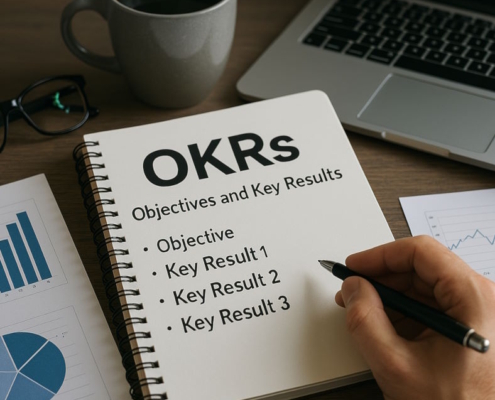Permit to Sell Food from Home in California.
Yes, you can sell food from home so long as you have California-required health and food handling permits and business licenses. You must get a permit to sell food from home from the county health department in California.
California allows home cooks to prepare and sell meals out of their home. California allows cottage food producers to sell foods that do not require temperature control for safety from a list approved by the Department of Public Health. It is legal to sell homemade food from home after you obtain permit to sell food from home. You must get a permit from the county health department to operate a homemade foods business in California.
California is one of the few states allowing individuals to sell homemade meals, including meals containing meat. This is thanks to the Microenterprise Home Kitchen Operations (MEHKO) law of 2019. However, this law only applies to cities and counties that have opted to pass laws regulating microenterprise kitchens. So, it is not universal. In California jurisdictions where MEKHO has not been enacted, selling home-cooked meals is illegal.
In this article, our Los Angeles business attorney will discuss the following:
What types of homemade foods can I sell from home?
Cottage Food Operations are allowed you to make homemade food to sell from home if it is non-potentially hazardous food. These homemade foods you make and sell from home must now not support the rapid growth of toxins or microorganisms that could make people sick when the food is held outside temperature control. The categories of homemade food to sell from home are:
- Dried, dehydrated, and freeze-dried foods.
- Candy and confections
- Vinegars and mustards
- Powdered drink mixes made from manufactured ingredients
- Fruit butters, jams, jellies
- Oney and sorghum syrups
- Baked goods without cream, custard, or meat fillings.
- Dried, dehydrated, and freeze-dried foods
- Nuts, nut mixes, and nut butters.
- Extracts containing at least 70 proof or 35% food-grade for
- Human consumption ethanol/alcohol.
- Frostings, icings, fondants, and gum pastes that do not
- Contain eggs , cream, or cream cheese.
How do I get permit to sell food from home?
Yo may sell homemade food and sell it after getting the food permits required by Cottage Food Operations law. There are two different classes of Cottage Foods Operations permits:
Class A:
Class A permit can sell homemade prepared foods directly to the public. This includes selling food from home that are sold over the internet, or telephone. A direct sale may be fulfilled in person, via mail delivery, or using any other third-party delivery service. A Class A permit to sell food from home have a maximum gross annual sales are $75,000.
Class B:
Class B permit can homemade foods directly to the public or indirectly through restaurants and food markets. A direct sale or indirect sale may be fulfilled in person, internet, or third parties. Under Class B permit, you may sell food from home but cannot gross more than $150,000.
To qualify for a permit to sell food from home, you must meet the following requirements:
- Registering or obtaining a permit from your local Environmental Health Department.
- Preparing and packing foods from the Approved Foods List
- Completing a Cottage Food Operator Training within three months of registration/permitting
- Implementing sanitary operations
- Labels compliant with state and federal requirements
- Operating within the established gross annual sales limits
Do you need a permit to sell food on the street in California?
In order to operate in California, both cottage food producers and microenterprise home kitchens need to get a permit from their county department of health. To receive this permit, they will first need to do a food processor course that has been approved by the California Department of Public Health. In order to receive a Class A permit, cottage food producers have to perform a self-certification checklist. It is not required to have a home inspection. This is only necessary in the event of a customer complaint or there is an investigation into a food-borne illness. Fees for permits are dependent on the county, but most range between $100 to $150 per year.
In order to receive a Class B permit, Californian cottage food producers need to pass an annual physical inspection. Again, permit fees vary by county, but typically cost between $150 to $250 per year. Separate documentation is required for those who use their own water supplies or septic systems. Smoking is not allowed in the kitchens, and pets are also prohibited from being in the kitchens. In California, cottage food producers and microenterprise home kitchens can only employ one non-family employee.
Homemade Food Regulations in California
It is typical for states to regulate the cottage food industry, and California is no exception. In California, cottage food producers are allowed to sell “low-risk” foods. These are items that do not require temperature control to be consumed safely. The list of acceptable foods has been approved by the Department of Public Health. The following items are considered safe and “low-risk”:
- Baked goods
- Candy
- Syrup
- Mustard
- Nut butter
- Pastries
- Preserves and jams
- Caramel corn
- Honey
- Granola
- Crackers
- Pretzels
- Coffee beans
- Cereals
Some of the prohibited foods include pickles, juices, and meat products. California cottage food producers may not sell these items.
However, in cities and counties that allow microenterprise home kitchens, home chefs can sell meals that contain meat. They may also use open-air barbecues and wood-burning stoves to prepare food. That said, all food must be “prepared, cooked, and served on the same day.” It is important to note that even operations under MEKHO are forbidden from selling pickled foods, raw oysters, and producing dairy products.
Homemade Food Categories in California
The state of California divides its cottage food industry into a two-tier system. The first tier, known as Class A, permits the sale of homemade food to customers at farmers’ markets, festivals, and through home delivery. The second tier, known as Class B, permits third-party sales in retail stores like restaurants and grocery markets. Before 2021, both tiers put the limit on annual gross revenue at $50,000. Thanks to the passage of Assembly Bill 1144, the new annual limits are $75,000 for Class A and $150,000 for Class B. The new law also permits cottage food producers in both tiers to sell their products across California county lines. Cottage food producers are now also able to sell their products online and send them via mail to customers and third-party sellers.
The law, however, is much harsher when it comes to microenterprise home kitchens. Home chefs may only sell directly to customers from home. This would include takeout or dine-in. Not only are these operations limited to making $50,000 per year, but they also are limited to selling no more than 30 meals a day, or 60 meals each week. Third-party delivery systems are only permitted if the customer has a physical or mental disability.
Questions about Homemade Food Sales in California
Can I sell refrigerated baked goods?
Under Cottage Food Class A, cottage food producers cannot sell homemade baked goods that need to be refrigerated. Similarly, Class B producers cannot sell homemade baked goods that need to be refrigerated. However, microenterprise home kitchens can sell refrigerated homemade baked goods so long as the food is sold on the day it is made.
Can I sell meat?
Under Cottage Food Class A, cottage food producers cannot sell meat. Similarly, Class B producers cannot sell meat. However, microenterprise home kitchens can sell meat if it is provided in meals.
Can I sell pickled foods?
Under Cottage Food Class A, Food Class B, and for microenterprise home kitchens, it is illegal to sell pickled foods.
Can I sell low-acid canned goods?
Under Cottage Food Class A, Food Class B, and for microenterprise home kitchens, it is illegal to sell low-acid canned goods.
Can I sell fermented foods?
Under Cottage Food Class A, Food Class B, and for microenterprise home kitchens, it is illegal to sell fermented foods.






















